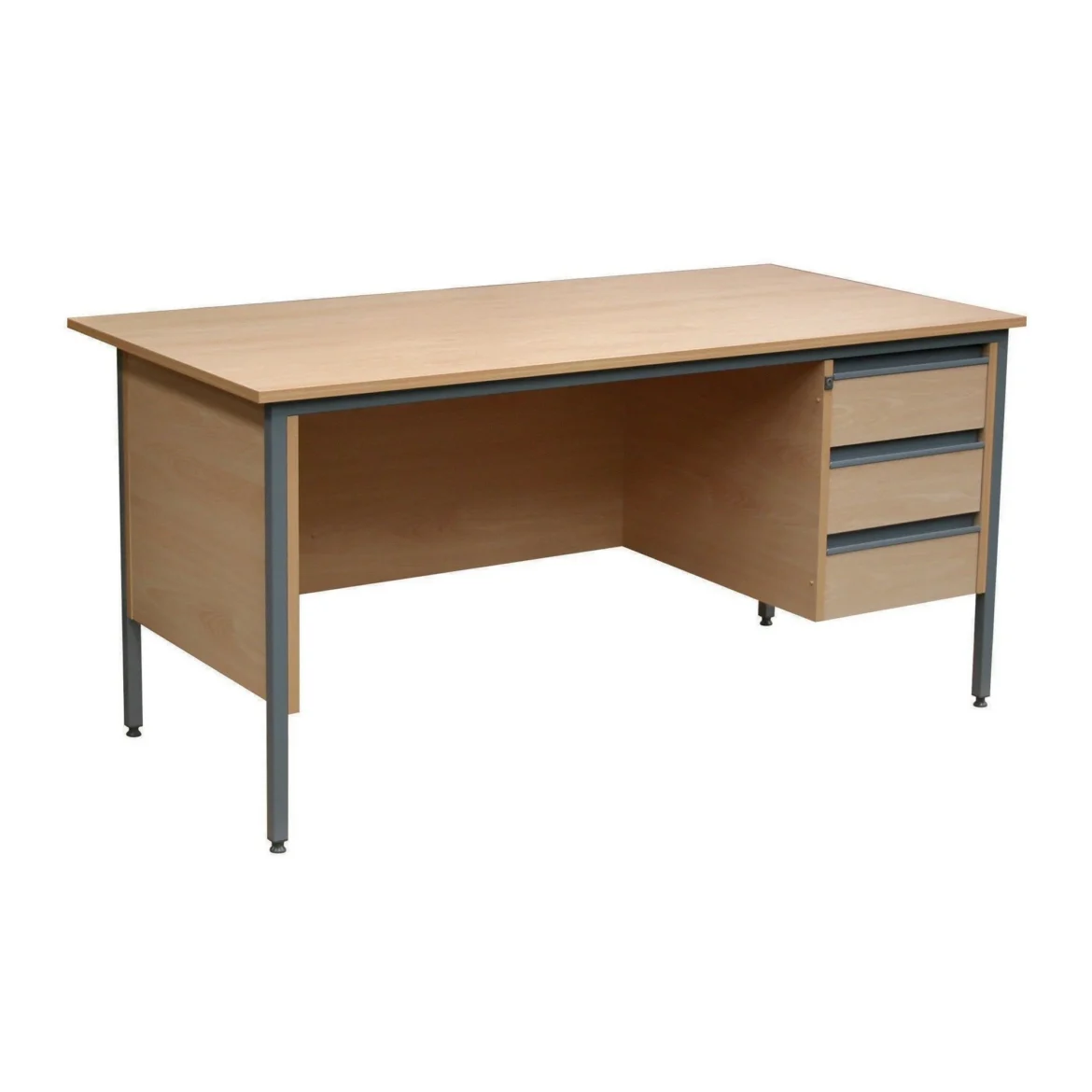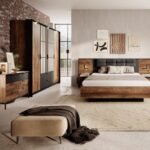A Comprehensive Guide to Choosing the Perfect Desk: Functionality, Style, and Comfort
A desk is much more than just a piece of furniture. It’s a workspace where ideas are born, tasks are accomplished, and creativity flows. Whether you’re setting up a home office, creating a study nook, or looking for a multifunctional desk, selecting the right desk is essential for both productivity and comfort.
This guide will explore the key factors to consider when choosing a desk, the various types available, and how to select a desk that suits both your space and needs.
Click Here To Get The Best Deal On Office Desks
1. Types of Desks for Different Spaces and Needs
There are various types of desks designed for different purposes. Here’s a breakdown of the most common desk types to help you determine which is best for your workspace:
a. Writing Desks
Writing desks are minimalistic and designed primarily for tasks like writing, studying, or working on a laptop. They usually come with a flat surface and minimal storage, making them ideal for those who don’t need a lot of extra space for accessories or large computer setups.
- Best for: Small spaces, students, or light office work.
- Style: Sleek and simple, with clean lines and a minimalist design.
b. Computer Desks
Computer desks are designed to accommodate desktop computers, laptops, and peripherals like monitors, keyboards, and mice. They often feature cable management systems, keyboard trays, and extra space for tech accessories.
- Best for: Office workers, gamers, or anyone who uses a desktop computer.
- Style: Functional and spacious, often with additional storage and cable management features.
c. Executive Desks
Executive desks are large, traditional desks that offer ample surface area and storage. These desks are typically found in offices or home workspaces where a lot of paperwork or multiple monitors are needed. They often feature multiple drawers, a solid wood build, and a more classic or stately design.
- Best for: Professionals, managers, or anyone looking for a large workspace.
- Style: Sturdy and often made of wood with traditional or elegant designs.
d. Standing Desks
Standing desks are designed to allow users to alternate between sitting and standing while working. These desks can help promote better posture and reduce the health risks associated with prolonged sitting. Some models are adjustable, allowing you to switch between sitting and standing as needed.
- Best for: Health-conscious individuals, remote workers, or anyone who wants a more active workspace.
- Style: Modern and ergonomic, often with height-adjustable mechanisms.
e. L-Shaped and Corner Desks
L-shaped desks fit neatly into corners and offer plenty of surface area for multitasking. They provide space for a computer setup on one side and paperwork or additional accessories on the other, making them ideal for multitasking or people who need a large workspace but want to save room.
- Best for: Home offices, multitaskers, or those with larger work setups.
- Style: Functional, often contemporary or modern, maximizing both space and utility.
f. Floating Desks
Floating desks are mounted directly onto a wall, freeing up floor space. These desks are ideal for small apartments or spaces where every square inch counts. They’re usually minimalist and don’t offer much storage, but they are perfect for light tasks like browsing the web or writing.
- Best for: Small apartments, minimalist spaces, or occasional workspaces.
- Style: Sleek, compact, and modern, with a space-saving design.
2. Choosing the Right Desk for Your Needs
When selecting a desk, it’s essential to consider your needs, space, and personal preferences. Here are some factors to think about:
Click Here To Get The Best Deal On Office Desks
a. Desk Size
Consider the size of your workspace and how much surface area you need. If you use multiple monitors or frequently work with documents, you’ll want a larger desk. For smaller spaces or lighter tasks, a compact desk or floating desk may be more appropriate.
- Large Spaces: An executive or L-shaped desk will provide ample room for multitasking.
- Small Spaces: Writing desks, floating desks, or compact computer desks are perfect for tight spaces.
b. Storage and Organization
Think about how much storage you need for your work materials. If you need drawers for files, office supplies, or personal items, look for desks with built-in storage. Some desks come with built-in shelves or hutches for added storage, which is useful for organizing books or decorative items.
- Minimal Storage: Writing desks and floating desks are great for clutter-free, minimalist setups.
- Ample Storage: Executive desks and L-shaped desks often feature multiple drawers, filing cabinets, and shelves for extensive storage needs.
c. Ergonomics
Comfort is key when it comes to spending long hours at a desk. Consider the height of the desk and whether it pairs well with your office chair to avoid strain on your wrists, back, or neck. If you prefer standing while working, a height-adjustable standing desk will allow you to switch between sitting and standing to maintain better posture and reduce fatigue.
- Standard Desk Height: A typical desk height is 29–30 inches, which suits most people when paired with an adjustable office chair.
- Ergonomic Add-ons: Consider desks with adjustable keyboard trays or monitor stands to improve ergonomics.
d. Aesthetics and Material
The material and design of your desk should complement your existing decor. Desks come in a variety of materials, from traditional wood to sleek metal and glass. Wooden desks tend to provide a more classic or rustic feel, while glass or metal desks create a modern, minimalist vibe.
- Traditional Look: Solid wood desks, often found in executive or writing desk styles.
- Modern/Contemporary Look: Glass, metal, or composite material desks with clean lines and simple designs.
e. Budget
Desks vary in price, depending on the materials and features. Basic writing or computer desks are more affordable, while executive or standing desks may require a higher investment.
- Budget-Friendly: Writing desks, small computer desks, and floating desks.
- Mid-Range: Standing desks, L-shaped desks, or larger computer desks.
- High-End: Executive desks or custom-built workstations with premium materials and features.
3. Desk Accessories to Enhance Your Workspace
To optimize your workspace, consider adding desk accessories that will enhance both functionality and comfort.
a. Monitor Stand
A monitor stand can elevate your screen to eye level, improving posture and reducing neck strain. It also frees up space underneath for storage.
b. Keyboard Tray
A keyboard tray can help maintain proper ergonomics by keeping your wrists aligned while typing, preventing discomfort or injury over time.
c. Desk Organizer
A desk organizer can help keep your workspace neat by providing designated areas for pens, notebooks, documents, and other small items.
d. Cable Management
Cable organizers or under-desk trays can keep wires and cords tidy, reducing clutter and making your desk look cleaner and more organized.
4. Desk Maintenance and Care
The longevity of your desk depends on the material and how well you maintain it. Here are some tips for keeping your desk in top condition:
- Wooden Desks: Dust regularly and use a wood cleaner to maintain the finish. Avoid placing hot objects directly on the surface.
- Glass Desks: Clean with a glass cleaner to avoid streaks and fingerprints. Be cautious of scratches by using coasters and mouse pads.
- Metal Desks: Wipe down with a damp cloth to remove dust and debris, and use a metal polish to keep it looking shiny.
Conclusion
Choosing the perfect desk requires a balance between functionality, comfort, and style. Whether you need a desk for heavy-duty office work, casual browsing, or a stylish addition to your home, there is a wide variety of options available to fit your needs. Consider the space available, the amount of storage you require, and how the desk will fit with your overall decor to find the ideal desk that makes working a pleasure.



